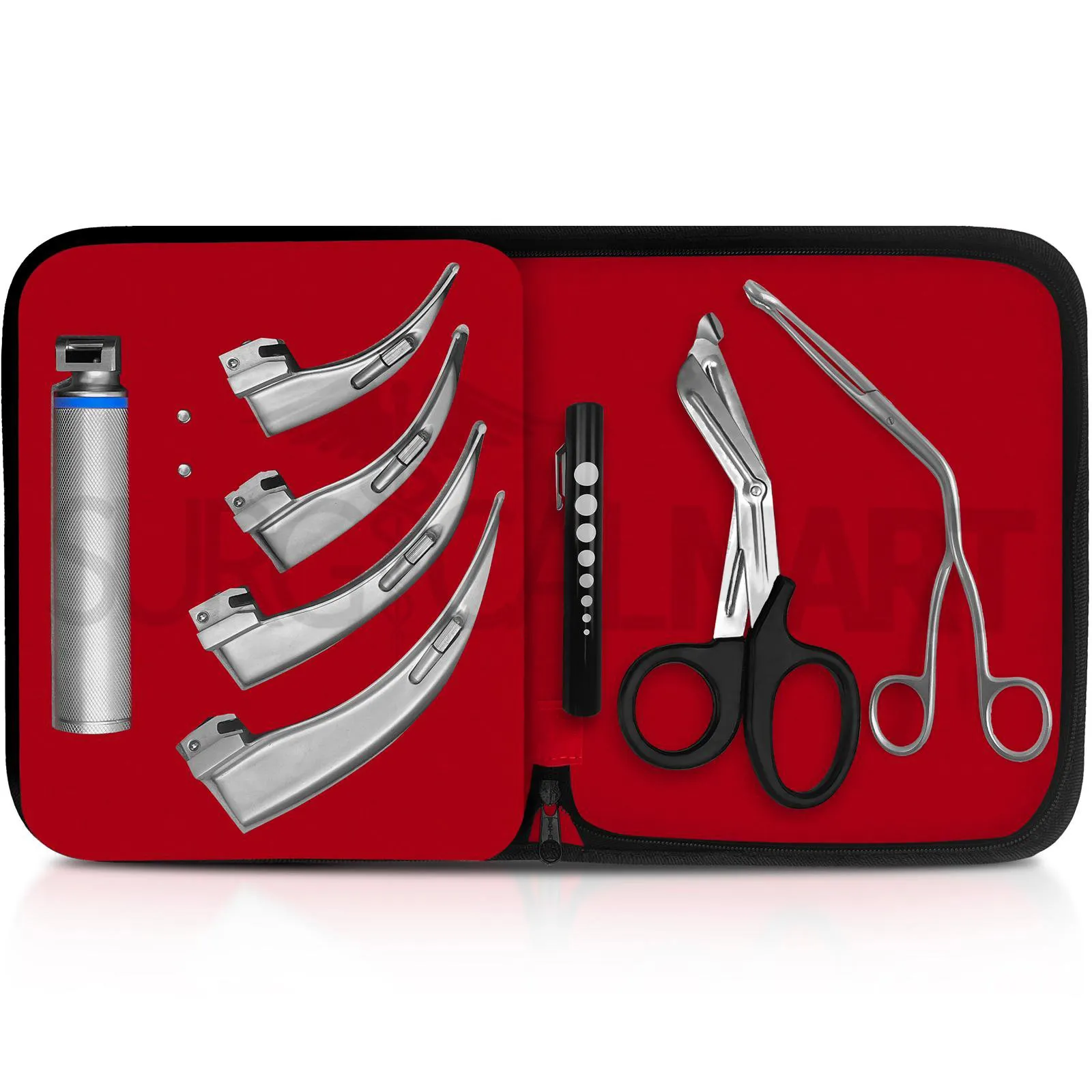Introduction
A laryngoscope kit is a crucial tool in airway management, allowing medical professionals to visualize the larynx and facilitate intubation. It is widely used in anesthesiology, emergency medicine, and critical care. Understanding the components and proper usage of a laryngoscope kit ensures successful airway management and patient safety. This guide covers the essential elements of a laryngoscope kit, different types, and best practices for using it effectively.
What is a Laryngoscope Kit?
A laryngoscope kit is a set of medical instruments laryngoscope kit designed for laryngoscopy, a procedure that provides a clear view of the vocal cords. The kit typically includes blades, handles, light sources, and additional accessories.
Components of a Laryngoscope Kit
Laryngoscope Blades
Laryngoscope blades come in different shapes and sizes to accommodate various patient needs. The two most common types are:
- Macintosh (Curved) Blades – Used for indirect elevation of the epiglottis.
- Miller (Straight) Blades – Used for direct lifting of the epiglottis, commonly in pediatric patients.
Laryngoscope Handle
The handle houses the power source and provides the necessary grip for maneuvering the blade. It typically contains batteries or a rechargeable power source.
Light Source
A bright light source is essential for visualization during intubation. Modern laryngoscopes use:
- Fiber optic light sources – Provide bright and consistent illumination.
- LED lights – Offer longer battery life and improved brightness.
Video Laryngoscope Option
Some kits include a video laryngoscope, which features a small camera to provide a real-time video feed of the airway, improving success rates in difficult cases.
Disposable and Reusable Options
- Reusable Laryngoscope Kits – Made of durable materials, require sterilization after each use.
- Disposable Laryngoscope Kits – Single-use to reduce infection risks and enhance hygiene.
Types of Laryngoscope Kits
Standard Laryngoscope Kit
Includes basic components such as blades, a handle, and a light source. Ideal for routine intubations.
Fiber Optic Laryngoscope Kit
Features advanced illumination technology for improved visibility in complex airway situations.
Video Laryngoscope Kit
Incorporates a camera and display screen to enhance visualization, commonly used in difficult airway management.
Pediatric Laryngoscope Kit
Specifically designed for neonates and children, featuring smaller blades and specialized tools.
How to Use a Laryngoscope Kit
Preparation
- Ensure the kit is complete and functional.
- Select the appropriate blade size and type.
- Confirm light source functionality.
Patient Positioning
- Position the patient in the sniffing position for optimal airway visualization.
- Use head elevation if needed.
Laryngoscope Insertion
- Hold the handle with the left hand.
- Insert the blade carefully into the patient’s mouth.
Airway Visualization
- Use the blade to lift the epiglottis.
- Identify the vocal cords and glottic opening.
Endotracheal Tube Placement
- Guide the endotracheal tube through the glottis.
- Confirm placement using capnography and auscultation.
Securing the Tube
- Inflate the cuff to secure the tube.
- Attach the ventilator or bag-valve mask for oxygenation.
Best Practices for Laryngoscope Kit Maintenance
Cleaning and Sterilization
- Follow manufacturer guidelines for disinfection and sterilization of reusable components.
- Use disposable blades for single-use scenarios.
Battery Maintenance
- Check and replace batteries regularly in laryngoscope handles.
- Ensure proper charging for rechargeable models.
Storage Guidelines
- Store the kit in a dry, sterile environment.
- Keep components organized for quick access in emergencies.
Advantages of Using a Laryngoscope Kit
- Ensures effective airway management.
- Reduces complications during intubation.
- Offers versatility with different blade types and sizes.
- Video laryngoscopes improve success rates in difficult cases.
Future Innovations in Laryngoscope Kits
Smart Laryngoscopes
Advancements include AI-assisted intubation for better success rates.
Wireless Connectivity
Future models may integrate with hospital systems for real-time data sharing.
Enhanced Ergonomics
Improved designs for better handling and reduced operator fatigue.
Conclusion
A laryngoscope kit is an indispensable tool for healthcare professionals performing airway management. Understanding its components, proper usage, and maintenance can improve intubation success rates and patient safety. Whether using standard, fiber optic, or video-assisted laryngoscopes, selecting the right kit ensures effective and efficient airway control.
FAQs
What is included in a standard laryngoscope kit?
A standard kit typically includes blades, a handle, and a light source for airway visualization.
What is the difference between a Mac and Miller blade?
Mac blades are curved and used for indirect epiglottis elevation, while Miller blades are straight and lift the epiglottis directly.
Can a laryngoscope kit be reused?
Yes, reusable kits require proper sterilization, but disposable kits are available for single-use scenarios.
How does a video laryngoscope improve intubation?
It provides real-time video feedback, enhancing visibility and increasing success rates in difficult airway cases.
What size laryngoscope blade is best for adults?
Size 3 or 4 Mac blades are commonly used for adults, while pediatric patients require smaller sizes.

